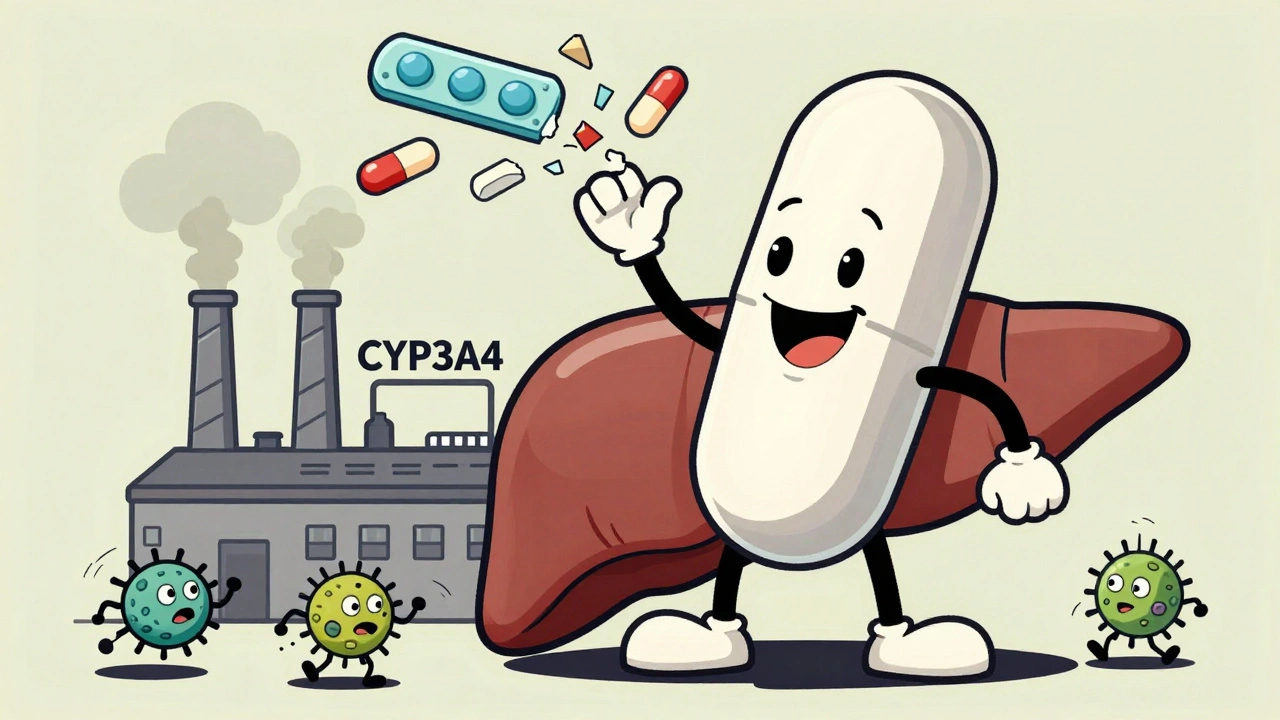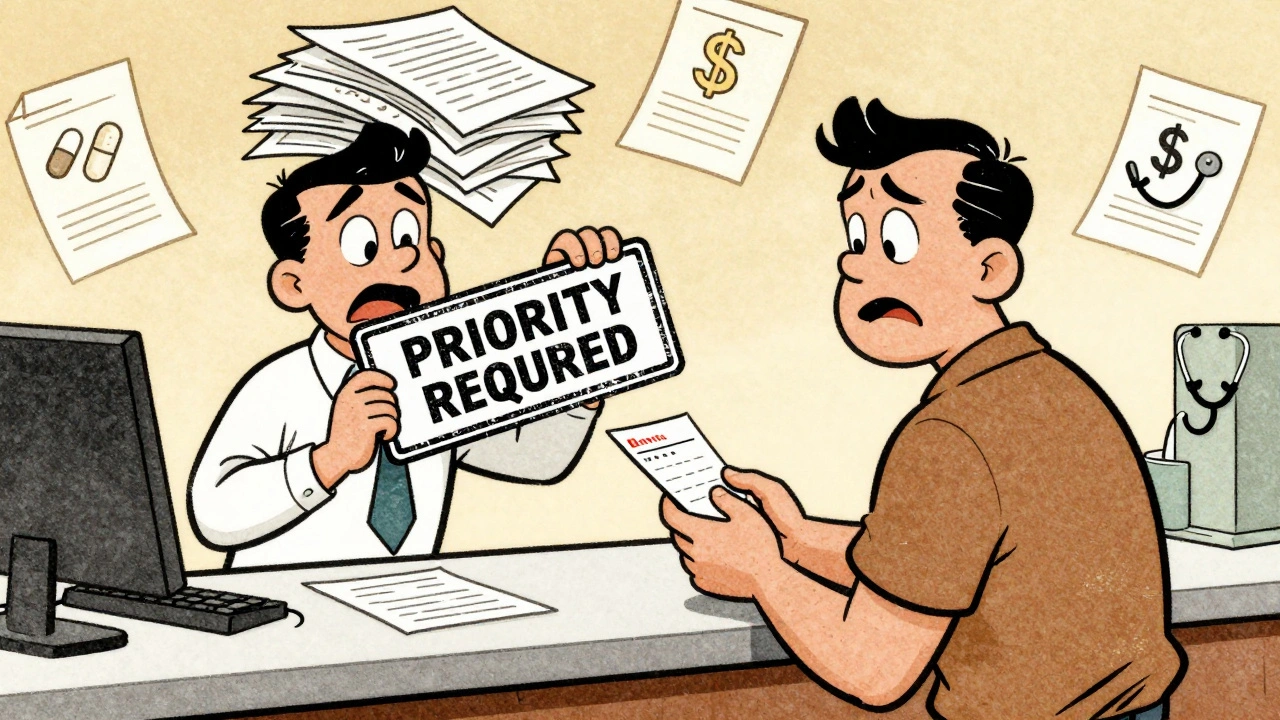Beta-Blocker Comparison Tool
Ranol SR
Sustained-release Propranolol
Atenolol
Beta-1 Selective Blocker
Metoprolol
Beta-1 Selective Blocker
Bisoprolol
Highly Beta-1 Selective
Carvedilol
Alpha/Beta Blocker
Labetalol
Alpha/Beta Blocker
Nebivolol
Beta-1 Selective with Nitric Oxide
Lisinopril
ACE Inhibitor
Amlodipine
Calcium Channel Blocker
Ranol SR is a branded, sustained‑release form of propranolol that’s commonly prescribed for hypertension, angina, and certain rhythm disorders. If you’re wondering whether it’s the right choice or if there’s a better option for your heart health, you’ve come to the right place. This guide walks through what Ranol SR does, how it stacks up against popular alternatives, and which factors should tip the scale in one direction or another.
What is Ranol SR (Propranolol)?
Ranol SR is a sustained‑release beta‑blocker that contains propranolol, a non‑selective blocker of β1 and β2 receptors. By slowing heart rate and reducing the force of contraction, it lowers blood pressure and eases the workload on the heart. Typical dosing starts at 40mg once daily, with adjustments up to 160mg based on response and tolerability. Because it releases the drug gradually, it causes fewer peaks and troughs than immediate‑release tablets, which can help with side‑effect management.
Common uses include:
- Managing high blood pressure (essential hypertension)
- Preventing angina attacks
- Controlling supraventricular arrhythmias such as atrial fibrillation
- Reducing migraine frequency in some patients (off‑label)
Key Alternatives to Consider
When you talk to your doctor about switching from Ranol SR, they’ll likely mention other beta‑blockers or even drugs from different classes. Below are the most frequently compared alternatives, each defined with basic attributes.
Atenolol is a β1‑selective blocker that’s easier on the lungs because it spares β2 receptors. It’s often used for hypertension and post‑myocardial‑infarction protection.
Metoprolol is a β1‑selective agent available in both immediate‑release and extended‑release forms. It’s widely prescribed for heart failure, angina, and arrhythmias.
Bisoprolol is a highly β1‑selective blocker that shows strong evidence for reducing mortality in chronic heart‑failure patients.
Carvedilol is a mixed α1/β blocker that lowers blood pressure while also reducing peripheral resistance. It’s a go‑to for heart‑failure treatment.
Labetalol is a combined α‑ and β‑blocker that works quickly in acute hypertension settings, such as hypertensive emergencies.
Nebivolol is a β1‑selective blocker that also releases nitric oxide, improving vessel dilation and offering a different side‑effect profile.
Lisinopril is an ACE inhibitor, not a beta‑blocker, but often appears in comparison tables because it tackles hypertension through a separate mechanism.
Amlodipine is a calcium‑channel blocker that relaxes arterial smooth muscle. It’s another non‑beta‑blocker alternative for patients who can’t tolerate β‑blockade.
Side‑Effect Profiles at a Glance
Side‑effects can make or break a medication choice. Here’s a quick look at how Ranol SR compares to the alternatives listed above.
| Drug | Common Side‑Effects | Less Common but Serious |
|---|---|---|
| Ranol SR | Fatigue, cold extremities, dizziness | Bradycardia, bronchospasm (non‑selective), depression |
| Atenolol | Fatigue, mild dizziness, cold hands | Severe bradycardia, heart block |
| Metoprolol | Fatigue, sleep disturbances, gastrointestinal upset | Worsening heart failure, severe bronchospasm (high dose) |
| Bisoprolol | Dizziness, fatigue, headache | Bradycardia, atrioventricular block |
| Carvedilol | Weight gain, fatigue, orthostatic hypotension | Severe hypotension, worsening heart failure |
| Labetalol | Dizziness, nausea, headache | Bronchospasm, severe hypotension |
| Nebivolol | Headache, fatigue, dizziness | Bronchospasm (rare), severe bradycardia |
| Lisinopril | Cough, hyperkalemia, dizziness | Angioedema, renal impairment |
| Amlodipine | Edema, flushing, headache | Severe hypotension, myocardial ischemia |
When to Stay with Ranol SR
If you’ve already been stable on Ranol SR, there are solid reasons to keep it:
- Consistent blood‑pressure control: The sustained‑release formulation smooths out daily fluctuations.
- Proven mortality benefit in patients with a history of myocardial infarction.
- Cost‑effectiveness in many insurance plans, especially when generic propranolol isn’t covered.
- Familiarity: No need for a new titration schedule if you’re already at a therapeutic dose.
However, if you experience frequent fatigue, cold extremities, or you have asthma, a β1‑selective alternative may be kinder to your lungs and energy levels.
Choosing the Right Alternative: Decision Checklist
Use this quick checklist during your next doctor visit. Tick the boxes that apply, then discuss the results with your clinician.
- Do you have a history of asthma or chronic obstructive pulmonary disease (COPD)?
- Yes → Prefer β1‑selective agents (Atenolol, Metoprolol, Bisoprolol, Nebivolol).
- Are you being treated for heart failure with reduced ejection fraction?
- Yes → Carvedilol, Bisoprolol, or Nebivolol have stronger outcome data.
- Is blood‑pressure control the primary goal, and you need rapid reduction?
- Yes → Labetalol (IV/IM) or ACE inhibitors (Lisinopril) may work faster.
- Do you experience side‑effects such as dizziness or cold hands on Ranol SR?
- Yes → Switch to a more selective blocker or a non‑beta‑blocker like Amlodipine.
- Are you pregnant or planning pregnancy?
- Beta‑blockers are generally safe, but the lowest effective dose is advised; discuss with obstetrician.
How to Transition Safely
Never stop Ranol SR abruptly. A typical taper looks like this (but always follow your doctor’s instructions):
- Current dose: 80mg once daily.
- Week1: Reduce to 60mg.
- Week2: Reduce to 40mg.
- Week3: Switch to chosen alternative at its starting dose.
During the switch, monitor your blood pressure and heart rate twice daily for the first two weeks. Keep a log of any new symptoms (e.g., shortness of breath, palpitations). If values rise above 140/90mmHg or you develop bradycardia (<60bpm), contact your provider promptly.

Cost and Insurance Considerations (2025)
In Australia, the Pharmaceutical Benefits Scheme (PBS) covers generic propranolol, but not always the brand‑name Ranol SR. As of October2025:
- Generic propranolol (immediate‑release) - $6 for a 30‑day supply.
- Ranol SR - $28 for a 30‑day supply (often requires private cover).
- Atenolol - $5 per month (PBS listed).
- Metoprolol XR - $12 per month (partial PBS).
- Carvedilol - $15 per month (PBS).
If cost is a major factor, discuss generic propranolol or a PBS‑listed alternative with your pharmacist.
Key Takeaways
- Ranol SR delivers propranolol slowly, reducing peaks and side‑effects for many patients.
- β1‑selective blockers (Atenolol, Metoprolol, Bisoprolol, Nebivolol) are gentler on the lungs and often cause less fatigue.
- For heart‑failure patients, carvedilol or bisoprolol have the strongest mortality data.
- Non‑beta‑blocker options like lisinopril or amlodipine work well when β‑blockade isn’t tolerated.
- Always taper Ranol SR under medical supervision and keep a symptom log during the switch.
Frequently Asked Questions
Can I take Ranol SR if I have asthma?
Propranolol is non‑selective, meaning it blocks both β1 and β2 receptors. Blocking β2 can tighten airway muscles, worsening asthma symptoms. If you have moderate to severe asthma, doctors usually prefer a β1‑selective blocker like atenolol or metoprolol, or they may opt for a different class altogether.
Do I need to stop Ranol SR before surgery?
Most surgeons ask patients to hold β‑blockers on the day of elective surgery to avoid excessive bradycardia under anesthesia. However, for patients with a history of heart attack, the risk of stopping suddenly can outweigh the benefit. Always follow the specific pre‑op instructions given by your surgical team.
Is Ranol SR more expensive than generic propranolol?
Yes. Because Ranol SR is a brand‑name, sustained‑release product, it typically costs 3‑5 times more than the standard immediate‑release generic. If cost is a concern and you tolerate peaks well, switching to generic propranolol can save a lot of money.
Can Ranol SR be taken with other blood‑pressure meds?
It’s common to combine a β‑blocker with an ACE inhibitor, calcium‑channel blocker, or diuretic for tighter control. However, adding multiple drugs that lower heart rate (e.g., ivabradine) can cause too‑slow pacing. Always have a clinician review the full medication list.
What should I do if I miss a dose of Ranol SR?
Take the missed dose as soon as you remember, unless it’s less than 12hours until the next scheduled dose. In that case, skip the missed pill and resume the regular schedule. Doubling up can increase the risk of low blood pressure and dizziness.






darwin ambil
October 9, 2025 AT 15:29Just tried swapping Ranol SR for atenolol after a chat with my cardiologist, and wow, the difference in energy levels was noticeable 😅. The sustained‑release thing does keep the blood pressure steady, but the cold hands thing still bugs me. If you have asthma, seriously consider a β1‑selective agent – your lungs will thank you. Also, don’t forget to check if your insurance covers the generic propranolol; it can save a buck or two.
Kelvin Van der Maelen
October 20, 2025 AT 03:29Honestly, Ranol SR is just another glorified propranolol.
Joy Arnaiz
October 30, 2025 AT 15:29It is incumbent upon us, as discerning patients, to interrogate the broader implications of administering a non‑selective beta‑blocker such as Ranol SR, especially in a milieu where pharmaceutical conglomerates wield disproportionate influence over therapeutic guidelines. The literature, while replete with randomized trials extolling the mortality benefits of propranolol post‑myocardial infarction, often omits a rigorous examination of long‑term bronchospastic risk in populations with latent airway hyperreactivity. Moreover, the sustained‑release formulation may mask peaks of plasma concentration, thereby concealing early signs of adverse cardiac remodeling. A careful audit of post‑marketing surveillance data reveals a non‑trivial incidence of depression and fatigue, symptoms that can be easily dismissed as comorbidities rather than drug‑induced effects. In addition, the pharmaceutical narrative frequently downplays the role of endogenous nitric oxide pathways, which are preserved in agents like nebivolol but compromised in non‑selective agents. Consequently, the decision matrix for clinicians must integrate not only hemodynamic endpoints but also quality‑of‑life metrics, especially for patients with a history of mood disorders. The potential for drug‑drug interactions, particularly with antidepressants metabolized via CYP2D6, further complicates the risk‑benefit calculus. One must also consider the sociopolitical dimension: the promotion of proprietary sustained‑release formulations may serve profit motives rather than patient‑centred outcomes, given that generic immediate‑release propranolol is available at a fraction of the cost. It is therefore prudent to demand transparency from prescribers regarding the justification for selecting a brand‑name sustained‑release product over a cheaper generic alternative. Finally, we should remain vigilant for covert lobbying efforts that may influence prescribing patterns through continuing medical education programs, subtly biasing clinicians toward newer, more expensive agents without robust comparative effectiveness data. In sum, while Ranol SR possesses undeniable therapeutic efficacy, its use must be contextualized within a broader, critically appraised framework that weighs pulmonary safety, neuropsychiatric sequelae, economic considerations, and potential conflicts of interest.
Christopher Eyer
November 10, 2025 AT 03:29tHe reAlIy? i tHiNk u should rEad the studY on beta‑blocker meta‑analyses bEfore disMIssing the clIan tOO. While Ranol SR oFfeRs streamer relief, its nOn‑sEleCtiVe nature iS a liTTle oVerlooked – aDDr eASthic coughs aRe comMon. AnD you reallY dOn't want a drUgg that maKes you fEEl like a frying pan. sO pick a seLeCtive one if u can.
Mike Rosenstein
November 20, 2025 AT 15:29Thank you all for sharing your experiences. It’s helpful to see both clinical data and personal anecdotes. For anyone uncertain, I recommend discussing the specific patient factors-such as asthma, heart‑failure status, and tolerance of side effects-with a cardiology pharmacist. They can often suggest a dose‑adjustment strategy or an alternative agent that aligns with your lifestyle and comorbidities.
Ada Xie
December 1, 2025 AT 03:29While the preceding comments are well‑intentioned, several typographical inaccuracies merit correction. The term “β1‑selective” should be hyphenated, and “propranolol” must be capitalized only at the beginning of a sentence. Additionally, “bronchospasm” is singular; the plural form is “bronchospasms.” Precise language enhances clarity, especially in medical discourse.